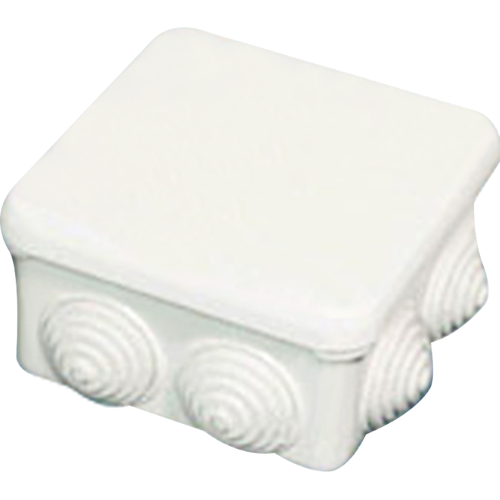Fundamentally, the electrical junction box is a safeguard against possible hazards in the ever-changing field of electrical wiring. It acts as the junction point for wires, where they converge, split off, and remain protected from the outside world. The electrical junction box becomes heroes in our walls and ceilings because they provides not only physical protection but also an essential first line of defense against electrical fires, short circuits, and the potential for electrocution.

The Junction Box’s Multifaceted Persona: An Exhibition of Arrays
The Protectors Made of Plastic: These lightweight champions, who rule the residential sphere, are highly valued for their non-conductive, corrosion-immune character and ease of installation. They grow well in the peaceful interiors of houses and provide an affordable barrier against the common dangers of dust and small blows.
The Warriors of Metal: These steel or aluminum-forged boxes are the mainstays of commercial and industrial environments. Superior protection and grounding capabilities are provided by their robustness, which equips them to withstand harsh outdoor conditions and mechanical dangers in high-stress settings.
The Wanderers Who Are Weatherproof: Encased in gaskets and seals, the outdoor junction box brave precipitation, dust, and humidity as they journey outside. They are the explorers, making sure that connections stay safe and dry despite the wrath of nature.
The Sentinels of Specialty: These junction boxes are the experts because they are designed specifically for certain tasks, such as installing ceiling fans or working in hazardous environments or beneath floors. They exemplify precision and versatility, with features and materials tailored to address particular requirements.
Junction Box Deployment: An Art and Science with Best Practices
Respect for the Code: Local building regulations, which serve as the fundamental text for safe electrical installations, specify the where, how, and what of junction box installations. Disregarding these directives begs disaster.
Strategic Placement: Just like picking the ideal location for a stronghold, junction box placement calls for strategic planning. They must always be reachable, never buried in a wall or concealed behind a layer of plaster, and constantly prepared for the electrician’s call.

Vigilance and Inspection: The patrols that maintain the safety of the electrical system are routine inspections. By keeping a watchful lookout for early indicators of wear, loose connections, or weather infiltration, one may ensure that the junction box efficiently maintains its silent guard.











